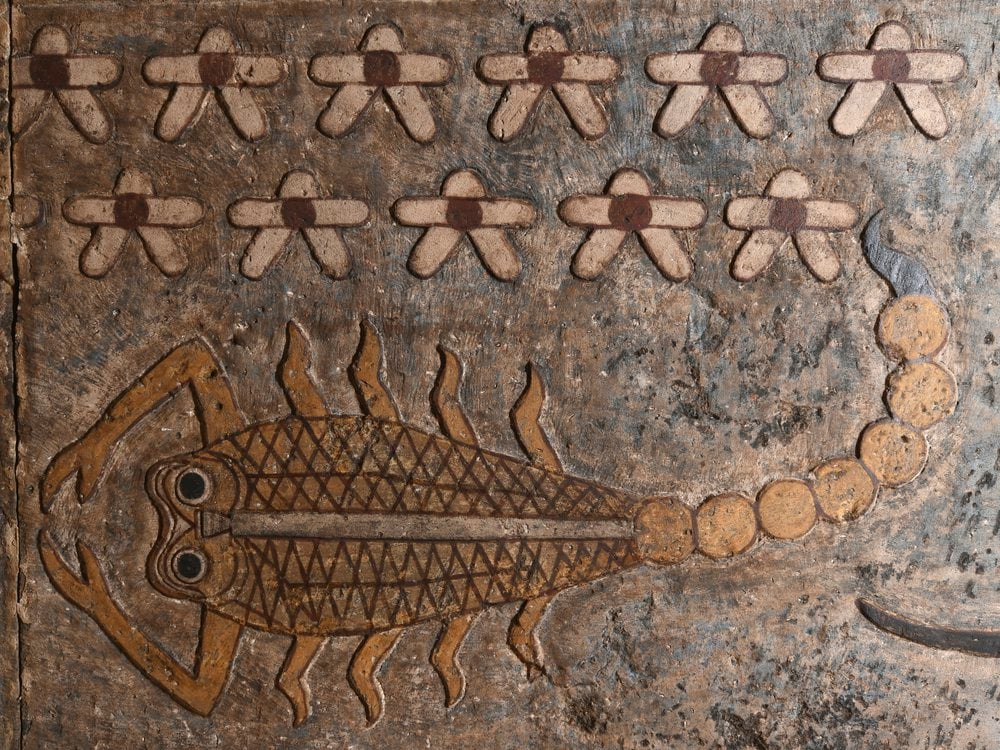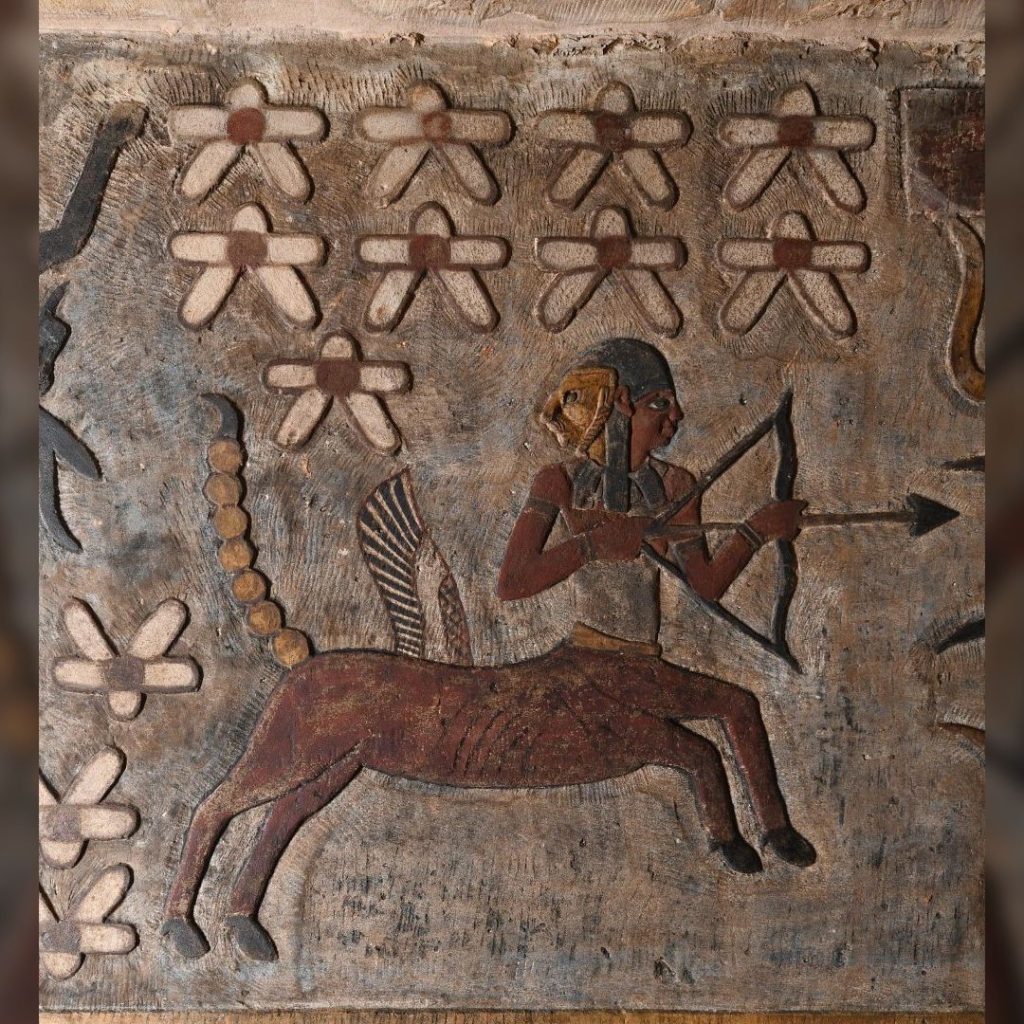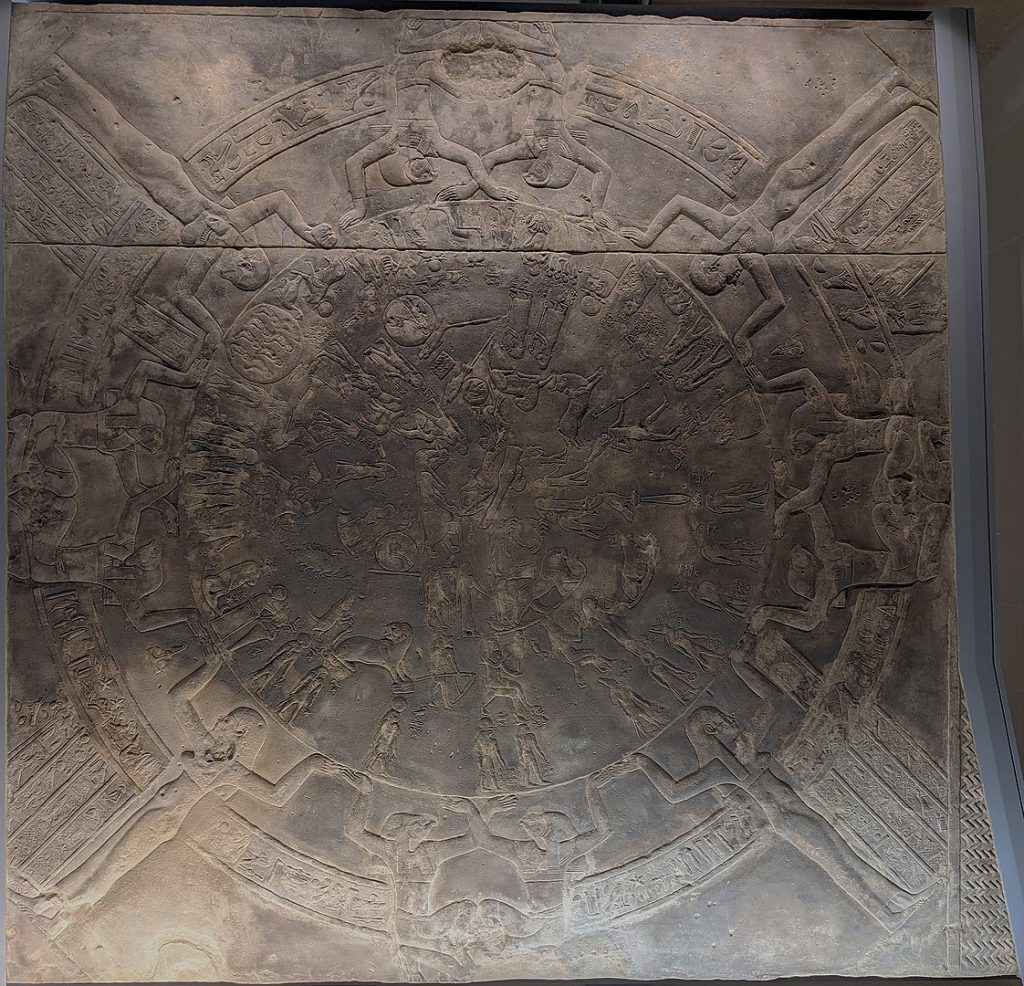Ancient Egyptian Astronomy
Discover the cosmic legacy of ancient Egyptian astronomy
Ancient Egyptians aligned their large temples with the stars, tracked time without clocks, and predicted the Nile’s floods using the sky. For them, the night sky was a guide that influenced their temples, calendars, rituals, and daily life. From the pyramids at Giza to the temples in Luxor, astronomy was central to their civilization. This connection to the cosmos, captured in stone and sky, still inspires scholars and travelers today.

Temple Alignments: Earth Meets Sky
Egyptian temples were designed to connect heaven and earth through their alignment with stars. The Great Pyramid of Giza, built around 2600 BCE, almost perfectly aligns with true north. This alignment likely tracks circumpolar stars, such as Thuban in Draco, which was the pole star at that time due to Earth’s slow axial wobble. Inside the pyramid, shafts point to Orion’s Belt, which is linked to Osiris, the god of rebirth. This connection helps guide the pharaoh’s soul to the “Imperishable Stars.”
At Abu Simbel, Ramses II’s temple is a solar wonder. On February 22 and October 22, which relate to his birth and coronation, the sunrise lights up the statues of gods and the pharaoh in the inner sanctum, reinforcing his divine authority. In Luxor, the Karnak Temple complex aligns with the winter solstice sunrise on December 21. The sun’s rays shine through massive pylons to illuminate the Holy of Holies, symbolizing the rebirth of the sun god Amun-Re. Imagine priests standing in the pre-dawn cold, watching light fill towering stone columns, merging time, space, and divinity.
Luxor Temple faces the Nile and aligns with the summer solstice sunset, matching the river’s direction to create a connection between the earth and sky. The Sphinx Avenue, which links Karnak to Luxor, reflects the stars of Ursa Major, established during the “stretching of the cord” ritual, where priests used star sightings to bless sacred areas.
Luxor Tours & Activities
Looking to save some costs on your travel? Why not join a shared group tour to explore Luxor, Egypt? Here are some activities you might be interested in:

Astronomy in Ancient Luxor (Waset)
Luxor, known in ancient times as Waset, was the spiritual center of Egypt. Its temples and festivals were alive with the rhythm of the cosmos. The Luxor Temple, which faces the Nile, is aligned with the sunset of the summer solstice. This alignment connects the flow of the river with the harmony of the heavens.

The Sphinx Avenue connects Karnak with Luxor and reflects the stars of Ursa Major, also called Meskhetu. During the “stretching of the cord” ceremony, priests would observe the stars to mark sacred ground. Luxor’s festivals celebrated the connection between the earth and the sky.

Star Charts and Cosmic Ceilings
The Egyptians divided the night sky into 36 groups of stars called decans. Each group rose every 10 days, helping them keep track of nighttime hours and creating early clocks based on fixed stars. They inscribed these decans on coffin lids and tomb ceilings to help priests time rituals and agriculture.
In the Valley of the Kings in Luxor, the tombs of Rameses VI and Seti I include diagonal star charts that display decans and the hours, guiding the soul’s journey in the afterlife. The tomb of Senenmut, which is about 3,500 years old, shows images of Orion (Osiris), Venus (as a heron), Ursa Major, Draco (which might be seen as a hippopotamus with a crocodile), and the Pleiades (called “watery bodies”).
Imagine a ceiling full of bright stars, lighting the way for the deceased in the afterlife while also helping priests keep time.

Calendars and Festivals: Time in Harmony
Around 2800 BCE, Egypt created a solar calendar with 12 months of 30 days and five extra days. This helped in planning agricultural activities tied to the seasons: Akhet (flood), Peret (growth), and Shemu (harvest). The first sighting of Sirius (Sothis) in mid-July marked the New Year and the start of the Nile’s flooding, a significant event for Isis, representing fertility and rebirth. To align the older lunar calendar with the seasons, a 13th month, Thoth, was added.
The civil calendar drifted a bit and completed a 1,461-year Sothic cycle without a leap day. In Luxor, festivals like the Opet Festival, held in August or September, featured sacred boats carrying Amun-Re, Mut, and Khonsu from Karnak to Luxor Temple and the funerary sites on the West Bank. These festivals highlighted the connection between divine power and royal authority. The Beautiful Festival of the Valley celebrated life on the East Bank and death on the West Bank, linking cosmic cycles with human life and strengthening community ties and the pharaoh’s legitimacy.

Instruments of the Sky
Egyptian astronomers used clever tools for accurate measurement. The merkhet, an L-shaped device with a hanging weight, worked with a bay (sighting tool) and measuring cords. These helped priests align temples, like Karnak, with Ursa Major or find true north for the pyramids at Giza. Gnomons were used to cast shadows to track the sun’s path during the day. In Karnak’s Magical Temple, clepsydras (water clocks) measured time when clouds covered the stars, making sure rituals started on time. A newly discovered sun-shadow observatory, possibly near Luxor, had a slanted stone sundial that marked time with its changing shadows. These simple tools show a deep understanding of the patterns of stars and the sun.

Societal Impact of Astronomy
Astronomy was important for Egyptian society. It raised priests to the role of cosmic intermediaries who predicted Nile floods, scheduled festivals, and helped with farming. In Luxor, temples like Karnak and Luxor acted like cosmic engines, with their star-aligned axes strengthening the pharaoh’s position as a link between the gods and people. Calendars helped organize work and harvests, while festivals like the Opet brought people together, mixing spiritual and economic life into a harmonious experience.

Modern Research and Archaeoastronomy
Egyptian astronomy had a big impact on later civilizations. Eratosthenes measured the Earth’s circumference using shadow methods from Egypt. Ptolemy’s Almagest relied on Egyptian observations, and their 12-month calendar influenced the Julian and Gregorian calendars. Today, archaeoastronomers study how temples in Luxor align with the stars, Senenmut’s star charts, and ancient papyrus documents. They use 3D modeling and orientation measurements, like the Egyptian-Spanish Mission’s work on 330 temples, to understand celestial knowledge. Preservation efforts make sure sites like Karnak remain open to the public, showing how the sky influenced Egypt’s culture.
Did you know that
By purchasing through our links, you support us at no additional cost.
Thank you for your support. ♥️






